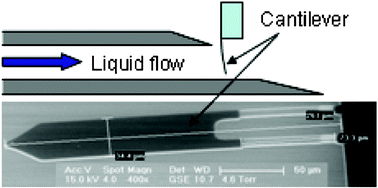Piezoresistive cantilever based nanoflow and viscosity sensor for microchannels
Abstract
Microfluidic channels are microreactors with a wide range of applications, including molecular separations based upon micro/nanoscale physicochemical properties, targeting and delivery of small amount of fluids and molecules, and patterned/directed growth. Their successful applications would require a detailed understanding of phenomena associated with the microscale flow of liquids through these channels, including velocity, viscosity and miscibility. Here we demonstrate a highly sensitive piezoresistive cantilever to measure flow properties in microfluidic channels. By


 Please wait while we load your content...
Please wait while we load your content...